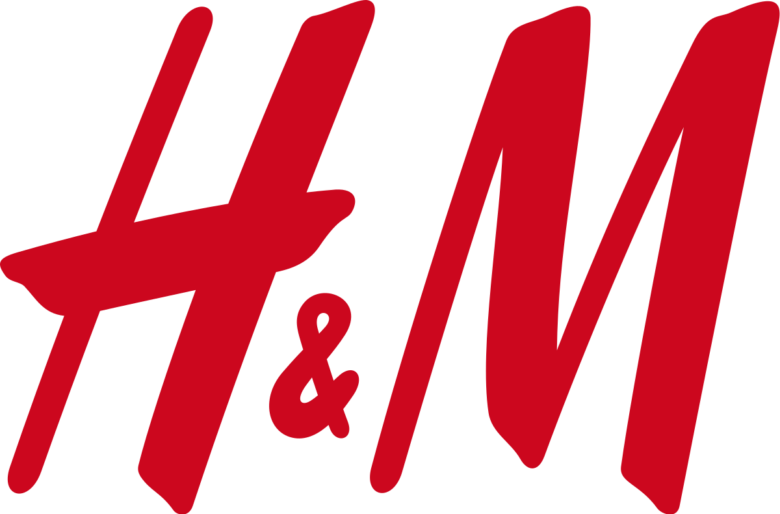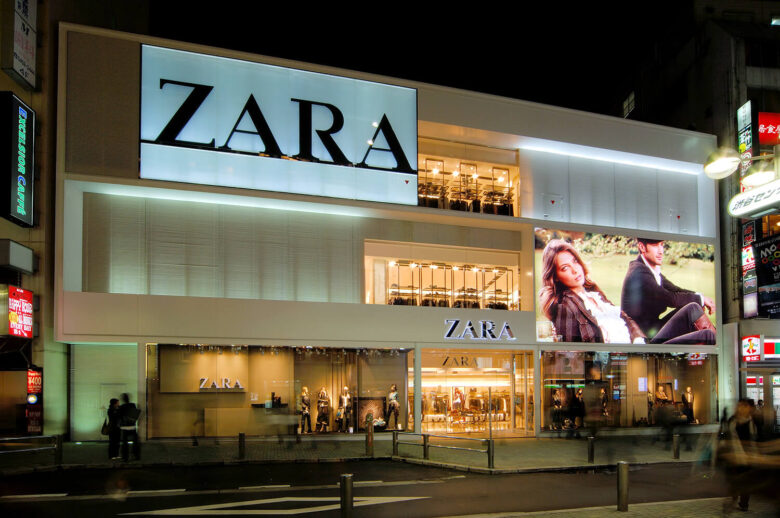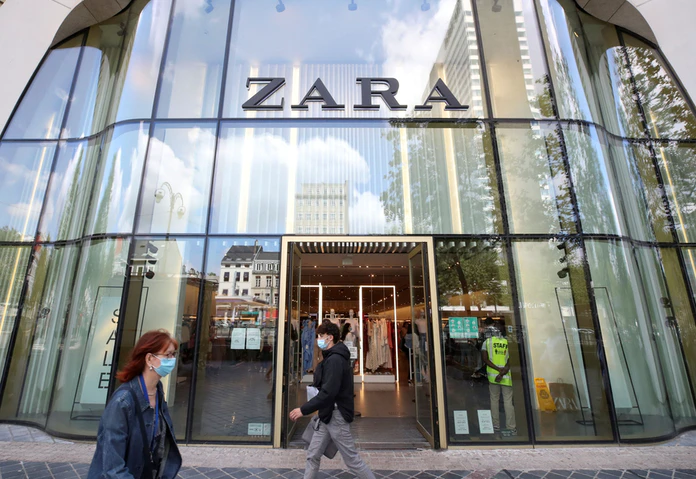Among foreign-affiliated apparel chains, H&M and GAP, which were thought to be firmly established in Japan, have closed one after another, and Inditex, the mainstay of ZARA, has closed all of its Bershka and feminine Stradivarius stores for the young, and even ZARAHOME and ZARA Even “ZARAHOME” and “ZARA” are closing one after another.
Will foreign-affiliated apparel chains disappear from Japan?

In retrospect, foreign-affiliated apparel chains entered the market one after another until 2013, after which they stopped entering the market, and since 2015, they have only been withdrawing, and after the Corona Disaster, the number of store closures has increased rapidly.
Will foreign-affiliated apparel chains continue to accelerate their withdrawal and disappear from Japan? Distribution strategist Kensuke Kojima explains that this is not necessarily a groundless fear.
The Japanese Market is Giving Up on Gap

Gap Inc. will close its large Gap store (1,300 square meters) in Terrace Mall Shonan on August 15, and will also close its flagship store in Harajuku in May 2019, bringing the total number of Gap stores in Japan to 15 after 2021 alone.
H&M also closed its Harajuku store, its second and largest flagship store in Japan, on August 2. Its neighbor “Forever 21” closed on October 15, 2017, and is withdrawing from Japan by closing all 14 stores by the end of October 2019.
Inditex also closed its flagship store in Shibuya on July 18 and withdrew all “Bershka” stores, and “ZARA HOME” is also rapidly narrowing its store network.
Rumors of the closure of the flagship ZARA store in Omotesando continue to circulate in the industry.
The “ZARA HOME” store in Omotesando is also closing rapidly.

The fast fashion boom, which was ignited by the arrival of H&M in September 2008 and Forever 21 in April 2009, cooled off around 2001, and from 2002 onward, trendy fashion itself was seen as unsustainable, and foreign chains stopped entering the market. After 2015, all the chains withdrew from the market.
After 2020, the Corona Disaster business restrictions were added to the situation, and foreign apparel chains, which had been biased toward opening stores in urban centers and large suburban malls, suffered a direct blow.
Foreign apparel chains with global operations are making investment decisions based on comparisons with the potential of local markets, and an increasing number of chains see no future in Japan, where income and consumption are declining due to the falling birthrate, aging population, and economic stagnation.
In particular, “Bershka” with its trendy Euro-street style and “ZARA” with its glamorous Euro-mode style have probably decided that a decline in demand is inevitable.
In this sense, there is no reason for GAP to give up on the Japanese market, but the company’s internal situation is significant in that it has been unable to stop discounting sales due to years of trial and error in merchandising, resulting in a decline in gross profit margins and making it impossible for the stores to make a profit.
Domestic sales “halved” from the peak
Before the arrival of H&M, until 2007, the major foreign apparel chains were limited to Gap Inc. and Inditex, with total domestic sales of 95.7 billion yen and less than 100 billion yen, but the arrival of H&M in 2008 and Forever 21 in 2009 ignited the fast fashion boom. The fast fashion boom was ignited by the arrival of “H&M” in 2008 and “Forever 21” in 2009, and rapidly expanded to 131.6 billion yen in 2009 and 160 billion yen in 2011, reaching a peak of 267 billion yen in 2015.
As rapid as the expansion was, the decline was also rapid, with the withdrawal of “OLDNAVY” at the end of January 2017, which triggered a decline to 237 billion yen in 2017, 214.7 billion yen in 2019 when “Forever 21” and “American Eagle” withdrew, and a sharp decline to 173 billion yen in 2020 when both sales disappeared. In 2021, when the Corona disaster caused widespread closures of stores, the mass closures of these companies also took a toll, and sales are estimated to have dropped to 134 billion yen, half of the peak.
The popularity of fast fashion led to lines of customers for the first two years, but thereafter sales efficiency plummeted as the store network expanded, and in recent years, even at large suburban malls, sales efficiency has fallen far below that of UNIQLO (at best 70% for ZARA and 40% for H&M, according to some sources).
As sales efficiency declined, discount sales increased and gross profit margins declined, making it difficult to make a profit even with favorable rent conditions that were said to be “on par with UNIQLO.
The business regulations for the Corona disaster pushed the company to the brink, and the number of unprofitable stores increased sharply.
Is Japan a “closed market?
A comparison of the pace of Inditex’s withdrawals from Japan and China shows how much foreign-affiliated apparel chains have given up on the Japanese market.
During the two periods following the Corona disaster, Inditex’s stores in Japan plummeted from 145 to 86, a reduction of less than six times. In mainland China, where the Xinjiang cotton crisis led to a boycott, Inditex’s stores plummeted from 570 to 303, a 53% drop over the same period.
The fact that the store network has been reorganized without much difference between mainland China, where half of the stores were prepared to pull out due to the boycott, and the still favorable Japanese market is due to a significant difference in expectations for the future potential of the market.
Inditex may have decided that the Japanese market, with its accelerating deprivation and shift away from fashion, was more difficult than the Chinese market, where the “national tide” (patriotism that praises Chinese culture and products) is on the rise and foreign brands are leaving.
The label “Japan in the sunset
Gap also seems to be under the impression that the Japanese market is a difficult market to sell at a fair price.
There are more than a few more expensive denim and work brands that have much higher regular price sales rates, and it is tempting to point out their foolishness in not paying attention to their own poor merchandising and marketing.
Even H&M, which is optimistic that it can improve its profitability by negotiating rent and replacing store assets, may be forced to close a large number of stores or withdraw from the Japanese market if the recovery from the Corona disaster is delayed any further.
If even GAP, H&M, and ZARA, which seemed to have established themselves in Japan, are forced to close their doors in large numbers, it is inevitable that foreign apparel chains that are planning to enter the Japanese market will cease to exist.
It is hard to believe that apparel businesses in South Korea and China, both of which are gaining momentum from the Korean wave and the national trend, would bother to open new stores, which are costly and unprofitable, when cross-border EC (represented by SHEIN), which has an overwhelming cost advantage, is rapidly growing.
The label of “Japan in decline” is unlikely to be removed unless a revolution takes place.
In addition, in the series of articles, “The Truth Behind the ‘Three Misunderstandings’ That Caused the ‘Collapse’ of the Apparel Industry,” we report nakedly on the “true nature of the big problem” in the apparel industry, which is strangling its own people.


コメント